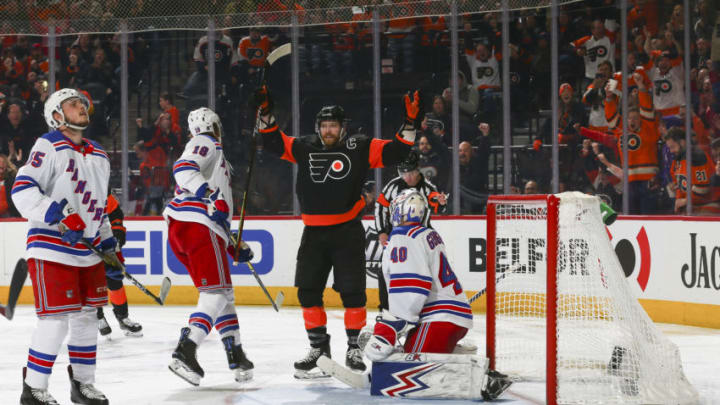Three improvements Rangers must make when hockey resumes

Zone Exits and Defensive Structure Must Improve
Long gone are the Rangers teams of the early 2010s that would seemingly finish in the top-five in goals-against perennially. A rebuild has paved way for a revolving door of young defensemen to be paired with some stale, and aging stalwarts of the past. In the 2018-2019 campaign, the discombobulated Blueshirts finished 23rd in the league with a 3.26 goals allowed per game, a full goal higher than their 2011-2012 brethren.
During this halted season, the still youthful but more prepared Rangers remain 23rd in goals allowed but have managed to improve that mark to a 3.14 total. Hidden by tremendous offensive outbursts are the countless defensive lapses that so often lead to the red lamp being lit behind the Rangers’ goal.
The defense has to be the focal point for the Rangers moving forward, as offensively they have the ability to score on any team in the league. If the Rangers can mold the young defensive corps into a solid and mobile group, then the blueprint toward the Stanley Cup will have been laid out.
Currently, the Blueshirts allow the fifth-highest shot total per game, yielding a little more than 32 shots per game. To make matters worse, the Rangers also allow the third-most high danger scoring chances per 60 minutes, according to Natural Stat Trick, at a whopping 12.49.
The Blueshirts’ problems defensively stem from their inability to move the puck cleanly out of their own end as well as their problems staying structured and not running around their defensive zone. Too many times the Rangers get pinned in deep due to a bad pass or clearing attempt, and then instead of staying in a zone or man to man structure, they start to chase the puck.
To correct this, the Rangers must improve drastically when it comes to breaking out of their own end. According to Corey Sznajder, the majority of the Rangers struggle to get the puck out of the zone efficiently. In fact, only Adam Fox, Jacob Trouba, Artemi Panarin, and Pavel Buchnevich are truly efficient at exiting the zone with possession.
Marc Staal ranks the lowest, followed by Libor Hajek, Ryan Lindgren, Brendan Smith, and Tony DeAngelo, who is just about average. Improved zone exits mean the Rangers will spend less time chasing in their own end and more time attacking offensively. A second aspect to improve in the defensive zone setup.
Since the Rangers employ several older defensemen along with younger and more inexperienced d-men as well, they should adopt a zone structure in their own end. A hockey zone is similar to that of football, where every player has their own specified coverage spot. The big adjustment in hockey is that when the puck switches sides, the defenseman who is in front must move to the corner, while the defenseman who was previously engaged in a battle must now slide to the front.
If the Rangers can master these two integral aspects, their defensive game and overall point totals will drastically improve. Rangers head coach David Quinn has been praised for his player development, getting collegiate players prepared for the NHL game.
Now, he faces his toughest challenge yet. He must change NHL players from offensive-minded talents to two-dimensional athletes who can get back defensively. These changes will take a while to implement, but in order for the Rangers to become the elite team they foresee themselves being, alterations must be made by the time the season resumes play.
Related Story. Shesterkin;'s KHL playoff record. light